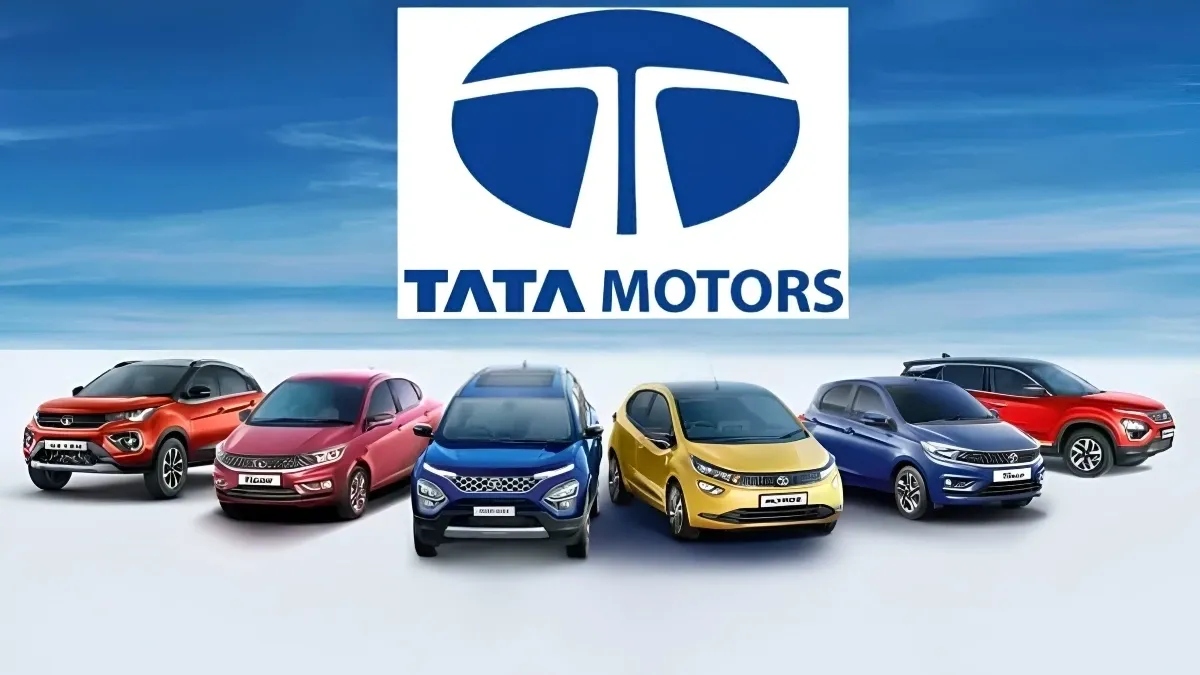Tata Motors, one of India’s leading automobile manufacturers and a globally recognized brand, finds itself in the midst of challenging times as shifts in consumer demand and changing investor sentiment create hurdles and opportunities for growth. The company, which has a storied history of innovation, faces scrutiny as trends in sustainable mobility and economic uncertainty reshape market expectations. For investors, staying updated with the Tata Motors share price and understanding its place in broader market dynamics, including its potential as a safer investment during economic volatility, is crucial.
A Glimpse into Tata Motors’ Journey
Tata Motors, a flagship company of the Tata Group, is synonymous with advancing India’s automobile sector. The company has contributed significantly to manufacturing commercial vehicles, passenger cars, and even electric vehicles (EVs). Its global reach is bolstered by subsidiaries such as Jaguar Land Rover (JLR), which has brought international prestige and a performance-driven portfolio to the brand. Investors closely monitor the Tata Motors share price as it reflects the company’s innovation, market performance, and continued dominance in both domestic and global markets.
In recent years, Tata Motors has prioritized electric mobility, an area gaining momentum due to global climate concerns, government incentives, and shifting consumer preferences. With impressive EV offerings like the Nexon EV and Tiago EV, Tata Motors has positioned itself as a leader in India’s green mobility revolution. However, challenges such as supply-chain disruptions, rising costs, and regulatory pressures constantly test the company’s resilience.
Shifting Demand in the Automobile Industry
The automobile sector is navigating several transformative trends, including increasing demand for electric vehicles, a push for premium features, and a focus on sustainability. Tata Motors has tapped into these trends by actively expanding its EV portfolio and enhancing technological innovation in its products. Still, competition is fierce. The likes of Tesla, BYD, and emerging Indian players bring new levels of rivalry to the race for EV dominance.
While the fundamental demand for passenger vehicles remains strong in India, factors such as inflation, geopolitical uncertainty, and unpredictable fuel prices have impacted consumers’ purchasing power. The commercial vehicle segment, on the other hand, has witnessed fluctuating demand due to economic swings and infrastructure development pacing. These changing dynamics underline the importance of keeping an eye on the Tata Motors share price, as it often reflects investor confidence and market sentiment amid these shifts.
EV adoption in India is still at a nascent stage but is growing at an exponential rate. Tata Motors’ ability to sustain growth in this sector depends on addressing barriers such as charging infrastructure, affordability, and improving battery technology. For those closely tracking Tata Motors’ performance, its hold over EV market share and expansion efforts will be key indicators of long-term success, as it transitions from conventional vehicles to greener alternatives.
Investor Mood Surrounding Tata Motors Share Price
The Tata Motors share price serves as a barometer of investor sentiment and gives insights into how market participants view the company’s growth trajectory. As of late, the stock’s performance has oscillated due to external and internal factors such as rising input costs, global inflationary pressures, and uncertainties around JLR’s profitability and supply chain.
Investors have also displayed caution in automobile stocks amidst economic hardships, leaning toward defensive stocks in sectors like pharmaceuticals, FMCG, and utilities as reliable havens during turbulent times. Defensive stocks are traditionally less affected by economic cycles since the demand for essentials doesn’t waver substantially with recessions or downturns. Given Tata Motors’ inherent cyclicality linked to consumer discretionary spending, shareholder sentiment tends to fluctuate based on macroeconomic trends and quarterly earnings updates.
The company’s ability to position itself effectively against shifting investor preferences is critical. While some investors remain optimistic about Tata Motors’ EV strategy and JLR recovery plans, others are evaluating the stock based on short-term headwinds like input cost inflation and slowed global growth.
Navigating Challenges: A Strategic Approach
Tata Motors is no stranger to overcoming challenges. The company is actively working to streamline production processes and reduce operational inefficiencies. A focus on cost optimization, strategic partnerships, and an innovation-first approach remains central to its vision of maintaining leadership in the domestic automobile market while improving global footprints with JLR.
One area that has garnered investor interest is Tata Motors’ commitment to building sustainable mobility solutions. India’s EV adoption roadmap and the government’s Production Linked Incentive (PLI) schemes for auto manufacturers are encouraging signs for companies like Tata Motors aiming to accelerate EV manufacturing. Moreover, its localized sourcing and manufacturing approach for EV batteries position the automaker favorably in a cost-sensitive market.
However, improvements in investor confidence will largely hinge upon JLR’s performance, especially in key markets like China and Europe, which have their own sets of challenges stemming from geopolitical issues and economic uncertainty. Strengthening the luxury and SUV portfolio while catering to the rising demand for EV models is essential for sustained profitability in foreign markets.
Defensive Stocks vs Cyclical Plays
The inherent risk profile of automobile stocks often pushes investors to compare them with defensive stocks, especially during market volatility. Defensive stocks, known for their stability, attract investors seeking consistent returns and security. As automobiles fall into the consumer discretionary category, demand tends to rise sharply during periods of economic prosperity and decline during recessions. This cyclical nature makes stocks like Tata Motors’ inherently riskier than those in less sensitive industries.
Despite this volatility, long-term investors remain optimistic about Tata Motors’ plans to capitalize on EV demand and improve global operations; many view it as a medium- to long-term cyclical bet rather than a short-term safe haven. High-risk investors seeking growth may still find Tata Motors to be a compelling pick, driven by its innovation-led approach and access to diverse markets.
Final Thoughts
As Tata Motors maneuvers through shifts in demand and evolving investor preferences, the company remains focused on driving sustainable growth and enhancing its EV and luxury vehicle portfolios. For investors closely tracking the Tata Motors share price, understanding the cyclical nature of the automobile industry underscores the importance of factoring in broader market trends and company-specific developments into decision-making processes.
Whether or not Tata Motors positions itself as a resilient stock amid uncertainty depends on how effectively it can address challenges like cost pressures, regulatory hurdles, and competitive landscapes while delivering consistent operational results. For investors seeking lower-risk options during turbulent economic times, defensive stocks may offer stability; however, for those willing to embrace the inherent risk and long-term potential tied to growth stocks, Tata Motors represents an intriguing prospect on the road ahead.
In this journey of transformation and adaptation, both the company and its investors must remain vigilant about market shifts while focusing on innovation and resilience to navigate the challenges posed by an ever-changing global economy.



